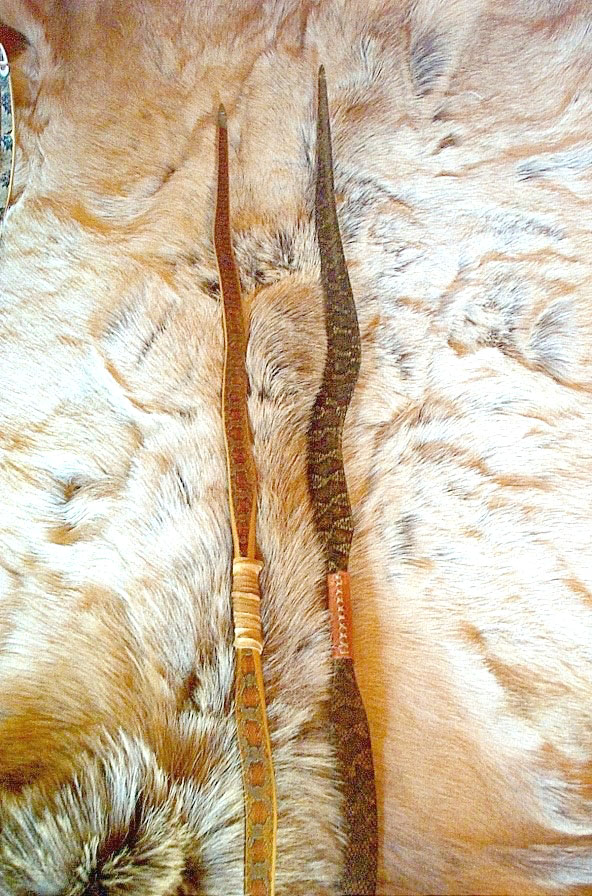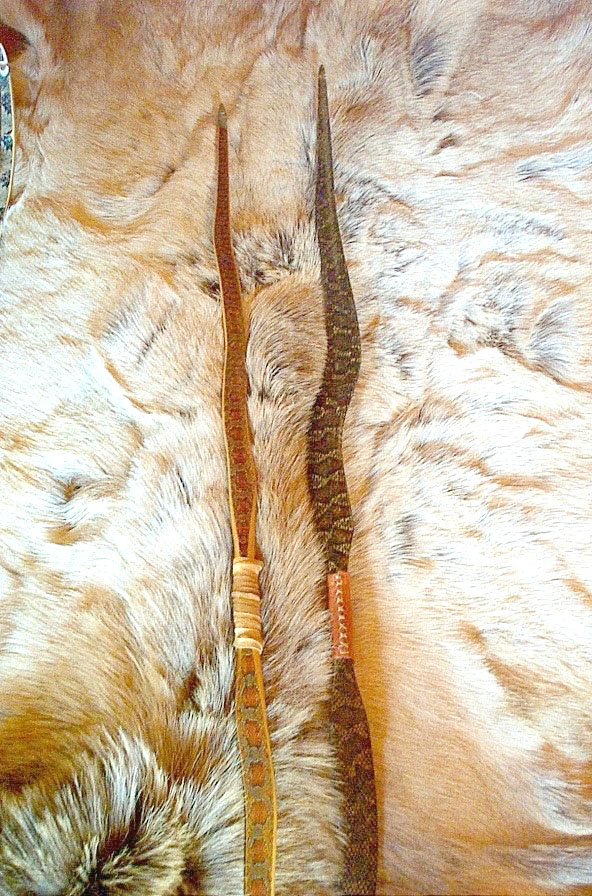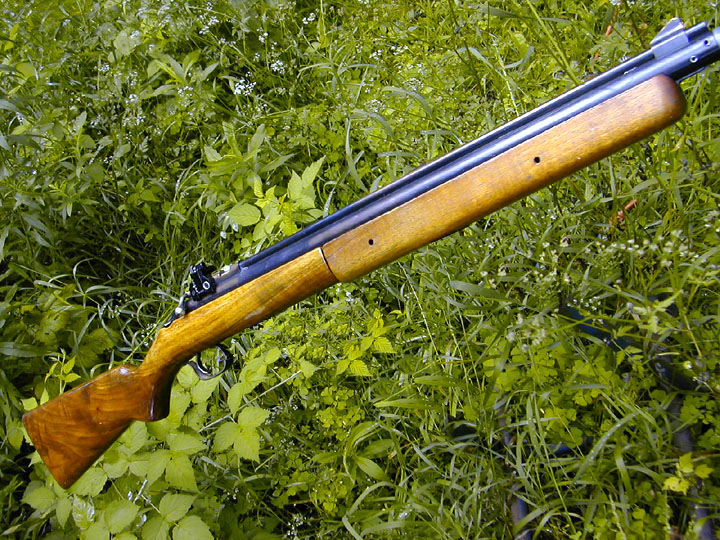I tend to prefer a simple, direct bow made of one piece of wood. This kind of bow is called a selfbow. I also prefer a selfbow to have a lot of character. The wood should reveal amazing grain and color. In the world of selfbow-making (all by hand) there’s an elite level where bowyers work with wildly curvy wood—often including knotholes as well—to create bows that still end up shooting perfectly.
Osage Orange is the kind of wood that grows so crazy yet makes lovely, lovely bows. It’s very hard, a thorny, gnarly wood and it starts out bright yellow or orange, deepening to deep gold over time. It takes good reading-skill to see the bow in a length of osage, especially a twisty, knotty piece. (A long chunk of wood that a bow is cut out of is called a stave.)
When such a bow is finished it often twists like a snake, hence the common nickname of “snaky bow” for such a critter. Knotholes are often knocked out as well (the wood inside a knot isn’t doing anything bow-wise, after all) leaving amazing eye-holes sometimes.
Sometimes these bows have slight imperfections in the all-important back of the bow (facing away from archer) so that the bows require backing to not break down—this is classically a layer of sinew applied with hide glue to strengthen the bow-back. To keep the glued sinew dry a cover is sometimes glued over it—and bowyers love using rattlesnakeskin on a snaky bow. Of course, sometimes a perfect back still begs for a nice skin on it…
Here are pictured a couple lovely examples of such bow-making by Vinson Minor of “Bows of Wood” in North Carolina. Check out the rest of his site as well by clicking on the “back to gallery” link.

Now, adding backing to a bow can make it shoot a little ‘heavier’ and give a bit more handshock. The ideal selfbow limb probably has perfectly clear, straight grain and is unbacked, leaving it as light as a limb can be. It’s also shockingly thin and somewhat wide in appearance. Simple selfbows made optimumly can shoot so sweet and nice…and fast. They can be basically as efficient as a hightech recurve bow. When you shoot one it’s like playing a lovely violin or guitar—there is such a musical resonance to it. I haven’t found a laminated bow to equal the feel. Now, this of course is where the art comes in. It’s possible to make your own selfbow in a couple days of hatcheting (or, far better yet, in the course of taking a class). But the excess wood that a neophyte inevitably leaves (to be sure of having a reliable enough bow) slows down the bow and increases handshock and results in a somewhat dead feel. A master bowyer takes away all unnecessary wood, leaving what looks sometimes like a fragile bow, but which can last for decades and shoot like a dream the whole time.
https://www.bowsofwood.com/id36.htm



